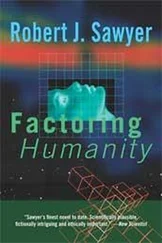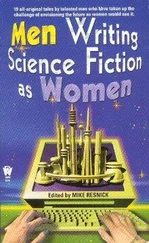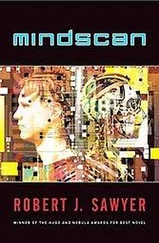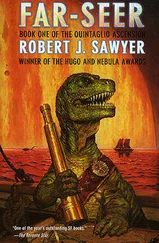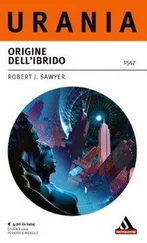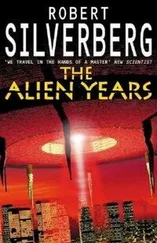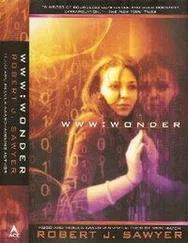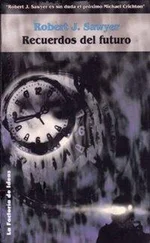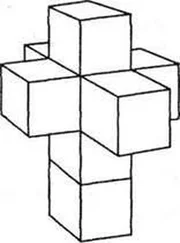“There’s another unusual circumstance in this case. It’s conceivable that if Hask did not commit the murder, then perhaps one of the other Tosoks did.
But you can no more allow the wrong Tosok to be punished than you could allow the wrong human to be punished. The mentality that ‘one of them did it, so one of them should pay’ can have no place your deliberations. Each of the seven Tosoks is an individual. You must be convinced beyond reasonable doubt that this specific Tosok, my client Hask, committed the murder if you are to find him personally responsible for it…”
Opening arguments consumed an entire day. At ten a.m. the next day, the prosecution’s case-in-chief began.
“On the record now in California v. Hask ,” said Judge Pringle, taking her place at the bench. “The defendant is present, as are his attorneys, Mr. Rice and Ms. Katayama. The People are represented by Ms. Ziegler and Ms. Diamond. The jury is present. Are the People ready to proceed?”
“We are, Your Honor,” said Ziegler.
“Very well. You may call your first witness.”
“Thank you, Your Honor,” said Ziegler, moving over to stand in front of the lectern. The Court TV camera panned to follow her. “The People call Dr. Anne Flemingdon.”
Flemingdon was a tough-looking white woman in her forties, broad shouldered, round-headed, with short-cropped hair that she was content to let show its gray. She was wearing a dark-blue jacket over a pale green blouse, and matching blue pants.
Dr. Flemingdon moved through the little wooden gate that separated the spectators from the lawyers, and took a position next to the court reporter.
She faced the clerk—a small Hispanic man—and raised her right hand before he had a chance to ask her to do so.
“You do solemnly swear or affirm,” said the clerk in a slightly accented voice, “that the testimony you may give in the cause now pending before this Court shall be the truth, the whole truth, and nothing but the truth, so help you God?”
“Yes,” said Flemingdon. Her voice was quite deep.
“Please have a seat in the witness box and state and spell your first last names for the record,” said the clerk.
Flemingdon sat down. “My name is Dr. Anne Flemingdon. Anne an E: A-N-N-E; Flemingdon is spelled F-L-E-M-I-N-G, D as in David, O-N.”
“Thank you,” said the clerk.
“Dr. Flemingdon,” said Ziegler, looking up from a sheaf of notes she’d placed on the lectern, “are you a medical doctor licensed to practice medicine in the state of California?”
“I am.”
“By whom are you currently employed?”
“By the county of Los Angeles.”
“In what capacity?”
“I’m the chief medical examiner and coroner for the county.”
“In that capacity were you called upon to examine the body of Cletus Robert Calhoun?”
“I was.”
“Where was this examination performed?”
“I did the initial examination at the crime scene at Paul Valcour Hall, a residence facility located on the University Park campus of the University of Southern California. I did further work on the remains once they were collected and moved to my lab.”
“Your Honor, we would like to enter People’s exhibits one through twenty-five: photos of the corpse taken at the USC crime scene.”
“Mr. Rice?” said Pringle.
Dale exhaled. “Your Honor, we would like to preserve our objection.”
“Understood,” said Pringle. “Overruled.”
Three easels were brought in. Each one held up a board with several color photographs mounted on it. Flemingdon left the witness stand and went over to stand near them. The Court TV camera jockeyed to show her but not the photos.
Hask looked down at the cluttered surface of the defense table. Dale looked back; the other Tosoks were averting their eyes from the photos as well, although one of them—Ged, it was—kept surreptitiously peeking at them.
“Dr. Flemingdon,” said Ziegler, “could you please describe the cause of death?”
Flemingdon unclipped a slim black laser pointer from her inside jacket pocket. “Certainly,” she said. “Death was caused by severe hemorrhagic shock. Dr. Calhoun suffered almost complete exsanguination—that is, his body was almost completely drained of blood. As you can see here in photo number four”—her laser pointer danced, a bright red dot amid all the dark-red blood—“Dr. Calhoun’s right leg was severed from his body, by a diagonal cut that began just below his hip. The cut was incredibly clean, resulting in all the blood vessels in the leg, including the femoral artery, being sliced open. The femoral is the principal artery of the thigh, responsible for supplying blood to the leg, and because it was a diagonal cut, the opening was large. It was through this opening that most of Dr. Calhoun’s blood drained out.”
“Drained out?” said Ziegler, her eyebrows rising. “Surely it was more dramatic than that?”
“Well, yes. Until the loss of blood killed him, his heart would have been pumping, causing the blood to spurt out, actually.”
Dale looked at Katayama and shook his head. But—then again—maybe the Sam Peckinpah quality of all this would numb the jury… and a numb jury wouldn’t cry out for vengeance.
“How was this cut made?” asked Ziegler.
Flemingdon’s laser dot danced again. “It started on the outside of the right hip, just below the groin line, and proceeded diagonally, at about a forty-degree angle, in toward the inner thigh.”
“Actually, my question was meant to elicit what sort of implement was used to make the cut.”
Dale rolled his eyes. Flemingdon knew damn well what Ziegler had meant; they’d doubtless rehearsed her testimony. But that little show was for the jury’s benefit, to make it look as though they hadn’t planned it all out.
“Oh,” said Flemingdon. “Well, that’s a tough one. I can make a clean cut through flesh with a scalpel, but Dr. Calhoun was wearing pants—Levi’s blue jeans, to be precise.” A couple of jurors smiled—who could picture Calhoun in anything else? “The cutting implement passed cleanly through the denim fabric, through the skin, through the muscles, through the femoral artery, and right on through the femur—the thigh-bone. I’d normally need a bone saw to go through the femur, and would never use a scalpel on denim—it would dull the blade. But this cut was made absolutely cleanly, without any snagging even on the bone.”
“Are you sure it was a single cut?”
“Oh, yes. It aligns absolutely perfectly. One single slice was made through the pants and Dr. Calhoun’s leg.”
“What was the maximum diameter of Dr. Calhoun’s upper thigh?”
“A little over eight inches.”
“So if a knife was used, it had to have a blade at least eight inches long, correct?”
“Yes.”
“The sharpest knives made are surgical scalpels, yes?”
“Yes,” said Flemingdon.
“Do any scalpels have blades eight inches long?”
“No standard one does. Of course, medical-supply companies can custom-make surgical tools.”
“But in all your experience, you’ve never seen a scalpel with an eight-inch blade?”
“Objection,” said Dale. “Leading.”
“Sustained,” said Pringle. “Rephrase.”
Ziegler nodded at the judge. “What’s the largest scalpel you’ve ever seen?”
“I’ve seen one with a five-inch blade.”
“Nothing bigger?”
“No.”
“I’m sure the jury has noticed your fancy laser pointer, Doctor. Could the cut have been made by a laser beam?”
“No. A laser is a burning tool—it uses high temperatures to cut. It would have singed the denim, as well as Dr. Calhoun’s skin, and the hairs on his thigh. And a laser—well, a laser doesn’t leave arteries and veins open. Rather, it cauterizes them—sears them shut. That’s why we use laser scalpels for delicate surgery: they sever and seal blood vessels simultaneously. No, this cut was not made with a burning implement.”
Читать дальше

